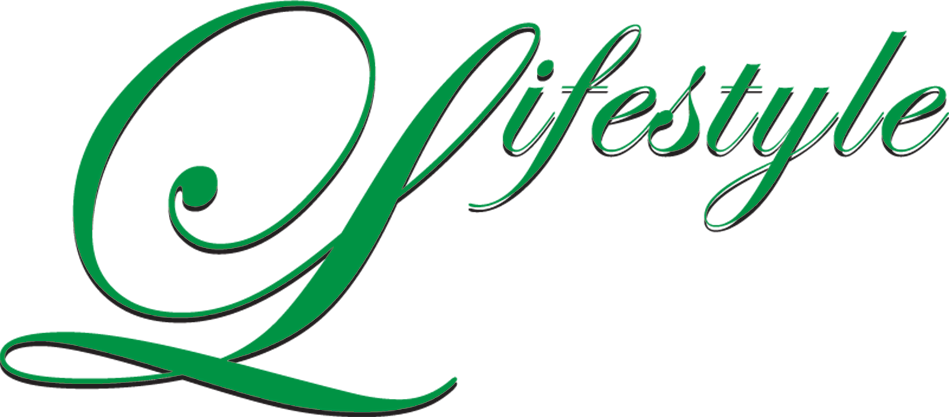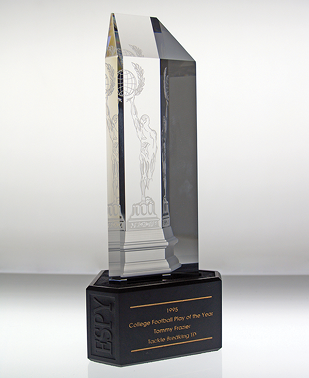- Home
- Media Kit
- Current Issue
- Past Issues
- Ad Specs-Submission
- Ad Print Settings
- Reprints (PDF)
- Photo Specifications (PDF)
- Contact Us


![]()
ONLINE

Creating the Unforgettable
Editors’ Note
A former master designer at Steuben, Director of Design at The Franklin Mint, Director of Design at Swarovski, and with concepts executed by the likes of Baccarat, Lenox, Orrefors, Rosenthal, Swarovski, and Val St. Lambert to his credit, Peter Yenawine has fulfilled requests from U.S. presidents, Hollywood celebrities, sporting legends, business icons and the Smithsonian Institution among others.
Company Brief
Based in Bethlehem, Pennsylvania, Crystal Signatures (crystalsignatures.com) designs and manufactures high-quality, custom-designed awards and gifts and installations for a variety of occasions. After a client submits a proposal and budget, Crystal Signatures conceptualizes, designs and produces a sketch for review and fine-tuning. Once it is approved, Crystal Signatures generally delivers the finished product within two weeks. Founded in 1996, the company has created custom pieces for corporate clients including Cigna, Coca-Cola, Federal Express, General Motors, Lockheed Martin, IBM, and Rolls-Royce as well as The ESPY Award.

Butterfly created by Crystal Signatures
Will you discuss the history and heritage of Crystal Signatures and has the company’s focus and mission remained consistent?
It has remained consistent because we created this company by investing in a new manufacturing process that allowed us to enter a marketplace where quick turnaround was a must and few other companies could accomplish this.
That ability has allowed us to continue to grow in the corporate gift business where we only have a few weeks to get things done.
We created a manufacturing facility on which we have two patents, and it’s unique in the world. That is our base and we have continued to use that as a springboard. However, when product lines get old and tired, we are unique enough that we can react quickly.
Changing times always have an impact on our business, whether that’s a political change or socioeconomic. Because we are a design-based manufacturer, we can always adjust to these changes and it’s our biggest advantage over any other company like ours. The top management of the company discusses this constantly, so we sometimes have to develop a new approach if we’re going to continue to grow and stay current with the times. This initiated what I think is a very exciting development that we’re involved in now, which is high-end 3D printing.
Will you discuss this development and how you are implementing 3D printing into the business?
3D printing has been developed over the past 20 years, but was not even talked about until the past 10 years. It’s now referred to as additive manufacturing, which is the most exciting manufacturing direction since Henry Ford developed the assembly line.
We had been using it on individual projects and learning as we did. My business background then kicked in and I knew we had to design for a market. We are still focused on the corporate gift market, but now we are also addressing the private label market, which is exclusive products for other companies such as drinkware and glassware and lighting.

The ESPY Award created by Crystal Signatures
How challenging has it been to get this message out and how do you plan to continue to build awareness around this evolution of Crystal Signatures?
Hopefully this will be a market that explodes exponentially. However, until very recently, 3D printing has been a slow process. There are people working day and night developing new ways to speed it up, so we are trying to create items in known market areas that are so dramatically new that we can get press that leads people to want to come and talk to us.
How will this impact the traditional pieces that Crystal Signatures has been known for over the years?
The one thing our products have always had in common is great design, extraordinary quality and perfect use of materials, and none of that is going to change. If we combine additive manufacturing with new technology, we’re not creating new markets – we’re feeding the market with new items.
We’re very optimistic that these are going to be highly appreciated, and it maintains our position of using material in the best way possible.
How important has it been to create a culture that adapts to change and is built on innovation?
Our team realizes that change and innovation is critical. This has always been the case. We have always tried to be innovative with any new product introduction; this new development has simply given us a new palate. If one is a painter and someone gives you a brand new palate with colors, a good painter is going to want to learn all about those and apply them to their work.
Your business is about gifts that create memories. How important is it that this doesn’t get lost in today’s world with all of the focus on technology?
Our tagline since day one has been “when the occasion requires the unforgettable.” That is still our mantra. All I’m doing is adding components that I think will make it easier to have those unforgettable occasions.
Nothing has changed there – we just look for new ways to express it. We’re in a very exciting time where there are truly new things going on.
I’m looking at a piece of porcelain that was 3D printed. If you had said that this was possible five years ago, no one would have believed you.
The revolution has started.
Will you discuss the impact the private label market has had on the business?
It’s huge, because private label has their own marketing and distribution which vastly expands our reach, and yet they also want innovation and new products for their marketplace.
There is a mammoth Frankfurt show in February and August every year and there is another huge one in Paris. All the crystal, tableware, silver and 3D products are displayed in these incredible spaces, but much of it is the same and has evolved very little.
When we looked at our product offering, we evaluated whether we wanted to add another product line. We decided that we did not; we wanted to add more meaning. We developed something where a corporation’s own identity would be much stronger with the addition of our new products.
We’re innovating for our marketplaces, and if some of them are thinking outside of the box, they will ask us to come and do it, because that is our mantra. We still find it amazing that corporate America in general spends millions of dollars advertising their brands and corporate mantras externally and yet forgets to send this same message internally when they are awarding the ones that make it all happen. We are here to help corporate America spread their message through great design, and we are really good at it.![]()